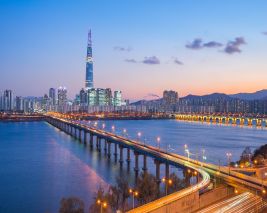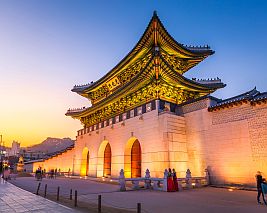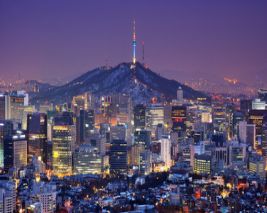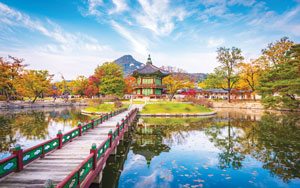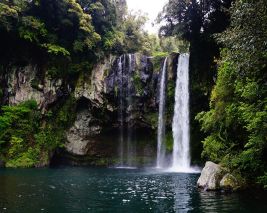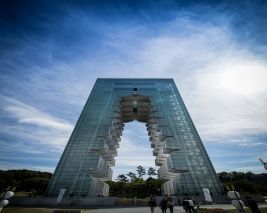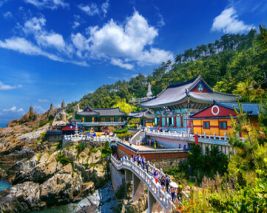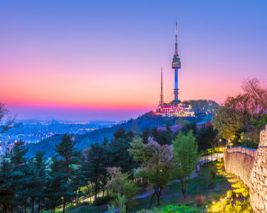Best time to Visit South Korea
South Korea has a very diverse climate and the country witnesses the weather transition into four main seasons each year. They are Spring, Summer, Autumn, and Winter. South Korea is a year-round destination, and there isn't any best time to visit the country. However, each season has its distinct character and travelers should decide based on what weather they prefer and what activates they want to do and places they want to visit. In addition to these South Korea celebrated numerous festivals each year and you can travel choose your travel based on festivals you may want to attend. Lastly, some season like spring and autumn are busy tourist season, hence its more expensive to travel then, than say as supposed to summers or winters. In the last ten years or so Tourism is Korea has seen a huge influx of tourists, especially from India. So here is an overview of seasons in South Korea. Hopefully, this will help you decide on when to plan your dream South Korean Vacation.
Spring
Springtime in South Korea typically falls within April and June. This is a truly spectacular time to visit the country as its painted in oink due to the abundance of numerous cherry blossom trees. The weather during spring is pleasant and least likely to fluctuate, making it the most popular tourist season in the country.
Temperature: Min 11degree Celsius and maximum 27 degrees Celsius
Weather: The weather is pleasant with clear skies and sunny days. The temperature is less like to fluctuate during springtime, hence making it an ideal time to travel to South Korea.
Significance: Events, festivals
Why you should visit now: The weather during spring is pleasant and least likely to fluctuate, making it the most popular tourist season in the country. Additionally, you can enjoy the cherry blossoms in full bloom.
Know before you visit: This is the busiest tourist time in South Korea so don't leave the planning until the last possible minute.
Tips: Camera, water bottles, light woolen clothing.
Summer
Summertime in South Korea is typically warm although there are frequent showers in July and August. Because of frequent rainfall, the weather in the country can be quite muggy and often intolerable. If you are not a fan of damp and humid weather its best to avoid traveling to the country during summers. The average temperature in June is 22 degrees Celsius and rainfall typically happen in July and August.
Temperature: Min 22 degree Celsius and maximum 31 degrees Celsius
Weather: Summertime in South Korea is typically warm although there are frequent showers in July and August because of which the weather becomes muggy and often intolerable.
Significance: Events, festivals
Why you should visit now: Due to the hot temperatures, you can expect fewer crowds and perhaps a bargain in airfare and accommodation.
Know before you visit: You may experience heavy rainfall because of which you may get stranded and experience delays with transportation.
Tips: Umbrellas, Raincoats, extra clothing, hats and sun cream.
Autumn
As the rain recedes, South Korea prepares to welcome another lovely weather, i.e., Autumn season. Just as springtime welcomes the cherry blossom, autumn season welcomes the maple blossom because of which the country is painted in shades of red and orange. With low rainfall id weather and unmatched natural beauty, autumn season (September-November) closely rivals sprint time especially when it comes to deciding the best time to visit the country.
Temperature: Min 0 degree Celsius and maximum 11 degrees Celsius
Weather: With low rainfall id weather and unmatched natural beauty, autumn season (September-November) closely rivals sprint time especially when it comes to deciding the best time to visit the country.
Significance: Events, festivals
Why you should visit now: With low rainfall id weather and unmatched natural beauty, autumn season closely rivals sprint time. Additionally, you can enjoy the maple trees in full blossom.
Know before you visit: This is the busiest tourist time in South Korea so don't leave the planning until the last possible minute.
Tips: Camera, water bottles, light woolen clothing.
Winter
Winter is South Korea fall between December and March. Although winters can be quite chilly in South Korea, there is a certain attraction to playing in the snow and wrapping up in from of the fireplace while enjoying a hot cup of cocoa. Public transport isn't affected by the weather and there are far less crowds on the street of the otherwise busy cities. And if you are a fan of snow sports and activities, this isn't a bad time to visit the country.
Temperature: Min -7 degree Celsius and maximum 3 degrees Celsius
Weather: With low rainfall id weather and unmatched natural beauty, autumn season (September-November) closely rivals sprint time especially when it comes to deciding the best time to visit the country.
Significance: Events, festivals
Why you should visit now: Fewer crowds and cheaper accommodations make winters an attractive time to visit South Korea, and if you are a fan of snow sports and activities, this isn't a bad time to visit the country.
Know before you visit: Due to the cold weather, there are fewer tourists, which means cheaper accommodation and airfares. And if you are a fan of snow sports and activities, this isn't a bad time to visit the country.
Tips: Woollen clothing’s and skiing and snowboarding gear if you are here for the winter sports.
Also, get insured with an Asia Travel Insurance by Thomas Cook.





